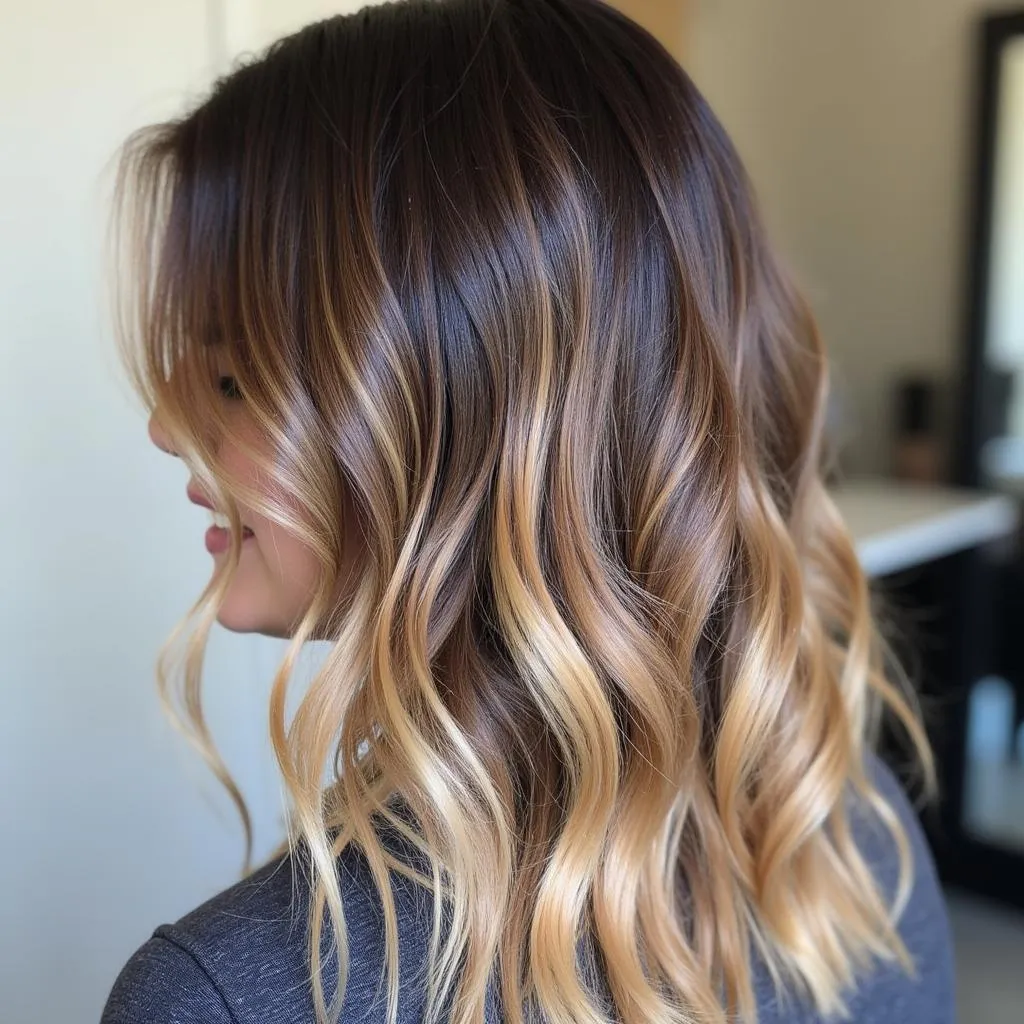A color melt, also known as a root melt or color melt balayage, is a hair coloring technique that creates a seamless blend of color from the roots to the ends. Unlike traditional highlighting or ombre techniques that often result in harsh lines of demarcation, a color melt aims for a gradual, gradient-like transition between shades.
This technique involves strategically applying different shades of hair color to create a soft, multidimensional effect. It’s like blending different hues of paint together to create a smooth, natural-looking result.
 Example of color melt hair
Example of color melt hair
How is a Color Melt Different from Ombre or Balayage?
While ombre, balayage, and color melting all involve blending multiple hair colors, they differ in their approach and final result:
-
Ombre: This technique typically features a darker shade from the roots to the mid-shaft, gradually lightening towards the ends. The color transition in ombre is more defined and less blended than in a color melt.
-
Balayage: This freehand technique involves painting highlights onto the hair to create a sun-kissed, natural look. While balayage can be blended to minimize harsh lines, it’s not solely focused on creating a seamless gradient like a color melt.
-
Color Melt: This technique focuses on a completely seamless transition of color. It involves carefully blending multiple shades to eliminate any noticeable lines, resulting in a soft, diffused look.
Benefits of a Color Melt
-
Natural Look: The gradual blending of colors creates a more natural and less “done” look compared to traditional highlighting techniques.
-
Low Maintenance: Since the color transition is seamless, root regrowth is less noticeable, making it a low-maintenance option.
-
Versatility: Color melts can be customized to suit any hair color, length, or texture.
-
Dimension and Movement: The use of multiple shades adds depth and movement to the hair, making it appear fuller and more voluminous.
 Color melt on different hair colors
Color melt on different hair colors
How is a Color Melt Done?
A color melt requires the expertise of a skilled hairstylist. The process typically involves:
- Consultation: Your stylist will discuss your desired look, assess your hair type, and recommend suitable shades.
- Base Color (Optional): Depending on your current hair color, your stylist may apply a base color to create a neutral canvas.
- Color Application: The stylist will strategically apply multiple shades of hair color, starting from the roots and blending upwards.
- Processing Time: The color will be left to process for a specific duration, depending on the desired lift and intensity.
- Rinsing and Styling: Once processed, the hair will be rinsed, conditioned, and styled as desired.
Maintaining Your Color Melt
- Color-Safe Products: Use shampoos and conditioners formulated for color-treated hair to prevent fading and maintain vibrancy.
- Minimize Washing: Frequent washing can strip hair of its color. Try to wash your hair 2-3 times a week.
- Heat Protection: Use a heat protectant spray before using styling tools to prevent color fading.
- Regular Touch-Ups: To maintain the seamless blend, schedule touch-up appointments with your stylist every 6-8 weeks.
Is a Color Melt Right for You?
If you’re looking for a low-maintenance, natural-looking hair color that adds dimension and movement, a color melt might be the perfect option for you. Consult with a skilled hairstylist to discuss your hair goals and explore color melt possibilities that complement your style.
Remember, what colors go with dark green pants? Just like choosing the right color combinations for your outfit, selecting the right hair color technique and shades requires a keen eye for detail and a deep understanding of color harmony.

